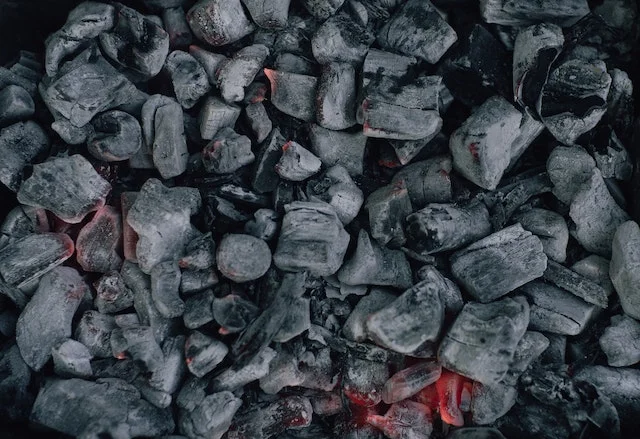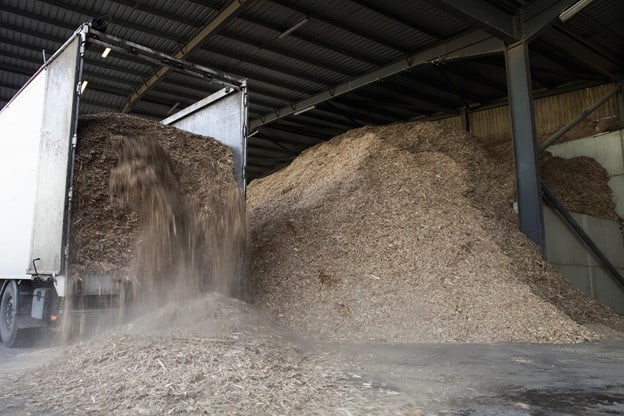Energy consumption around the world, but especially in industrialized societies, has been on the rise, and with it, biomass energy processing and production. It is estimated that most energy consumed in the world comes from non-renewable sources. Numerous countries have realized the adverse long-term effects of relying on non-renewable energy and have dedicated time, resources, and capital to develop a sustainable long-term energy plan. While there was a lot of progress in the numerous renewable energy fields, there is a particular interest in biomass possibilities.

About Biomass
The term biomass encompasses organic matter that is used to produce bioenergy. The most common way of releasing chemical energy from biomass matter is through burning. However, more sophisticated processes can help transform biomass into other usable forms of energy – liquids and gases recovered from the decomposition of this organic matter.
Converting bioenergy into a sustainable and useful energy supply is done by imitating natural processes but at a faster rate. In nature, biomass is often left to break down through natural processes. For example, if biomass is left lying on the ground in nature for a long time, it will gradually break down and release carbon dioxide and stored energy. By collecting and harnessing this natural process (or the principles behind them), we can release stored energy quickly and in useful ways. Essentially, biomass is a collective term for all plant and animal material that can be used for bioenergy production.
Types of Biomass Fuel
Biomass energy is an extremely versatile and diverse form of renewable energy. Modern biomass fuels can be refined into the following standard forms:
- Solid form – this is the most common form of biomass worldwide and includes all the organic materials that can be converted and used for energy purposes.
- Liquid form – a biorefinery can convert biomass into liquid fuel for transportation. Many governments and organizations encourage the use of these biofuels to protect the planet and our way of life.
- Biogas and biomethane – Renewable gas facilities and anaerobic digestion can produce biogas. Biogas is a versatile energy source that can be utilized in heating, electricity production, and even cooking.

What Exactly Are We Burning – Biomass Resources
When it comes to using biomass for energy, there is a wide array of resources available for getting energy. The production of biomass for our use is known as biomass feedstocks. A biomass feedstock can come in many forms. These are some of the most popular feedstocks we have:
- Dedicated energy crops – these are crops planted and harvested for energy production. They can be woody and herbaceous.
- Agricultural crop residue – bioenergy production can also make use of agricultural waste and residue from other activities. These byproducts can be processed into bioenergy that serves our everyday needs.
- Forestry or forest biomass feedstocks are powerhouses in the world of renewable energy. Residues from the forestry industry provide us with a vast solid biomass source that can be utilized for greener energy.
- Wood waste – wood processing leaves a lot of byproducts that carry energy-generating potential. Wood waste and forest residue are often converted into wood chips or wood pellets used for heating and generating electricity.
- Municipal solid waste – municipal solid waste allows us to convert our waste into biogas.

Bioenergy Technology
There is no shortage of technology for converting biomass into energy. Choosing the right technology for converting organic matter into bioenergy is extremely important for optimizing energy production. These are the technologies used in the biomass industry:
Direct Combustion
Direct combustion is the process of exposing biomass to heat and converting it into energy. It is the most common method for transforming biomass into energy. Direct combustion furnaces can be used to produce direct heat or steam. They are generally divided into two groups. The first group includes furnaces that have a two-stage system setup. The early stage of the process is for drying and partial gasification, and the next (and last) stage is for complete combustion. Popular furnaces in this category include Dutch brick ovens, spreader stokers, and fuel cell furnaces.
The second group is typically used with fine particle biomass liquids and feedstocks. It includes suspension and fluidized bed furnaces. Suspension furnaces burn particles while keeping them suspended by injecting turbulent preheated air that may, but not necessarily, contain biomass particles mixed in it. Fluidized bed combustors are made of boiling beds of preheated sand that provide a combustion medium into which biomass fuel is dropped or injected. These systems remove the need for grates but need methods of preheating air or sand to work.
Co-Firing
Co-firing is a modern practice that has enabled biomass an easy and affordable entry into the energy market. The method consists of co-firing fossil fuels (typically coal) with a biomass feedstock. This practice enables us to release less CO2 without the additional costs of building new infrastructure.

Thermochemical Processes
Thermochemical processes do not produce useful energy directly. They are designed to control oxygen and temperature conditions that can convert biomass into convenient forms of energy carriers, like oils, gas, or methanol. These forms of bioenergy are beneficial for their properties and characteristics. They can be more energy-dense and therefore cost less to transport, or they can be more stable and provide convenient combustion characteristics that make them more useful in gas turbines and internal combustion engines.
The Process of Pyrolysis
Pyrolysis is the thermal decomposition of materials in inert atmospheres at elevated temperatures. In practice, it involves subjecting the biomass to raised temperatures and reducing oxygen levels. This process inhibits complete combustion but still results in a change in chemical composition. In general, the process creates volatile products and carbon-enriched solid residue.
Converting Organic Matter Through Carbonization
Carbonization is the process of using destructive distillation to convert organic matter into carbon. It is an ancient pyrolytic process that has been optimized in modern times to create charcoal consistently. The process eliminates volatile components of wood, a process known as dry wood distillation. During dry wood distillation, carbon will accumulate due to reduced hydrogen and oxygen levels in the wood.
Carbonization typically uses wood that undergoes many physicochemical changes when exposed to higher temperatures. Modern methods have led to increased efficacy of the process, which allows us to do it on a large scale. Innovation in the field has led to three ways of creating charcoal:
- Internally heated – the most common form that is controlled by the combustion of raw material in a kiln. This method makes the most common form of charcoal.
- Externally heated – this allows oxygen to be removed from the process completely, providing more and better quality charcoal. The process requires the use of external fuel sources, like fuelwood or fossil fuel.
- Hot circulating gas – systems that recirculate heated gas can generate large quantities of charcoal and other byproducts. However, these systems are limited by high investment costs.
The Process of Gasification
Gasification is the process of converting biomass into hydrogen, carbon monoxide, and carbon dioxide. This is done through gasifiers (open-top or closed-top) designed to create ideal conditions for gasification. Gasification requires temperatures of about 1,472°F (800°C) and controlled levels of oxygen or steam. These high temperatures and controlled environments result in chemical reactions that transform biomass into gases that can be used to create bioenergy.
Catalytic Liquefaction
Catalytic liquefaction of biomass aims to produce liquid fuels and chemicals from organic materials. The technology behind catalytic liquefaction is designed to make higher-quality products with a greater energy density. The process itself is a high-pressure, low-temperature thermochemical process that is carried out in the liquid phase. For successful liquefaction, the process requires high hydrogen partial pressure or a catalyst. Despite the huge potential of catalytic liquefaction, technical problems often limit the opportunities of this technology.
How a catalytic converter works is shown in the video below.
Biochemical Processes
Microorganisms have long been utilized for the production of fuel like ethanol. However, the modern world has recognized these organisms’ enormous biochemical potential in organic waste treatment and conversion. Microbial engineering has brought about the usage of fermentation technologies (anaerobic and aerobic) in biogas.
Anaerobic Fermentation
Anaerobic fermentation, or anaerobic digestion, uses natural processes to create biogas. The process produces methane-rich biogas from manure and crop residues. This is done through the use of mixed methanogenic bacterial cultures that can grow at optimal temperatures. During the process of anaerobic fermentation, microorganisms break down organic materials and waste in an oxygen-free environment.
The process happens in four stages; hydrolysis, fermentation (acidogenesis), acetogenesis, and methanogenesis. The final step of the process is what creates biogas and wet residue (digestate). When functioning well, the bacteria can convert 90% of biomass into biogas, which can then be used for energy in cooking and lighting.
Methane Production in Landfills
The gas that is produced by landfill sites is known as landfill gas, or LFG for short. It is created from the natural microbial decomposition of municipal solid waste or MSW and is typically composed of 50% carbon dioxide and 50% methane, depending on the organic matter in the refuse. The amount of LFG produced depends on the amount of organic matter in the landfill.
Once LFG is stored, it has to go through a cleaning process that enables it to be utilized as biogas in internal combustion engines or gas turbines to generate electricity and heat. Methane is a potent greenhouse gas, coming from entering the atmosphere through unutilized landfill sites. Its recovery does not only give us a form of bioenergy but also lessens the impact of methane emissions on global warming.
Ethanol Fermentation
Ethanol is primarily used as a substitute for imported crude oil to reduce dependency on imported energy supplies. Advancements in fermentation technology have transformed ethanol into a petroleum substitute and fuel enhancer that is good for the environment and economically beneficial. The most common source for ethanol fermentation is sugarcane and sweet sorghum or cassava.
Biodiesel and Renewable Diesel
While vegetable oils have long been used in diesel engines, modern solutions give us a much greener alternative for transportation. Biodiesel and renewable diesel are both biomass-based fuels that are created from biomass or materials derived from biomass. These fuels are primarily used in diesel engines, but they can also be used as heating fuels. Despite the similarities these fuels have, they are still two distinct fuels that differ in physical properties and how they are produced.
Biodiesel is primarily produced through a process called transesterification. It involves first removing water and contaminants from the biomass feedstock. These vegetable oils or animal fats are mixed with alcohol (usually methanol) and a catalyst to create an oil that resembles petroleum-based diesel more closely. The result of this process produces glycerol and fatty acid methyl esters.
Glycerin is a sugar typically used in cosmetics and pharmaceuticals, while esters are what we refer to as biodiesel, which is most often used as vehicle fuel. Renewable diesel, also known as second-generation diesel or green diesel, is a petrodiesel-like fuel obtained from biomass sources that are not chemically esters. It is this distinction that separates biodiesel and renewable diesel.
Biomass Energy Processing and Production Is Easier With Our Bulk Material Handling Equipment
Regardless of what processing method you use, you will likely need the right conveyor belt system to handle numerous sizes, weights, and forms of biomass. Most biorefineries and processing factories that manage biomass in bulk need a cost-effective, low-waste, reliable, and safe conveying system that increases margins. Cablevey Conveyors has a broad range of enclosed tubular drag cable and disc conveyors that will ensure clean, safe, and efficient biomass handling. So whether you need a custom conveyor belt for your warehouse or an industrial conveyor belt for food, contact us today and let us help you streamline your operations.






